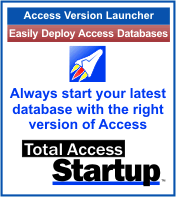 Here’s an article by FMS President Luke Chung that was recently published on the Entrepreneurs’ Organization, Washington DC web site discussing the need for small business owners to Create a Backup and Disaster Recovery Plan for Your IT System. Luke has been a member of EO for over a decade and previously served as the Washington DC chapter president.
Here’s an article by FMS President Luke Chung that was recently published on the Entrepreneurs’ Organization, Washington DC web site discussing the need for small business owners to Create a Backup and Disaster Recovery Plan for Your IT System. Luke has been a member of EO for over a decade and previously served as the Washington DC chapter president.
The article covers our experiences working with people running small to medium sized organizations, and the challenges they face to address business process continuation issues. An overview of the basic steps are covered.
Overview
As someone running a small organization, it’s easy to be consumed by day-to-day needs and neglect the importance of disaster recovery. Not only is it awful to think about, it requires detailed planning and thought to implement properly. Over the years, we’ve seen organizations run into problems because of inadequate planning and testing, so here are some pointers we’ve learned.
Disasters Happen
Unfortunately, bad things happen. You may have business insurance to pay for replacing your hardware, but for most organizations the value is in the data. Customer lists and purchase histories, accounting, inventory, operational reports and processes, management decision making systems, and even simple Word and Excel files can be critical to the success of your organization. Making sure these are accessible in the event of an emergency is worth considering before a disaster strikes.
Disasters can be on many levels. Certainly, there’s the chance of your whole building burning down but the more common situation is hardware failure or human error. All hardware eventually dies and a hard disk containing critical corporate information could just fail. Similarly, someone could make a mistake and accidentally delete data or files that need to be recovered. It may not threaten the whole organization but could be expensive and time consuming to recover.
For Microsoft Access applications in particular, read our related article, Creating a Backup and Disaster Recovery Plan for Microsoft Access Database Applications.



 The purpose of the SQL UNION query is to combine the results of two or more queries into a single result set. The list contains all the rows belonging to all the queries in the union. This applies to queries in SQL Server or Microsoft Access. A common question is whether to use the UNION or UNION ALL syntax.
The purpose of the SQL UNION query is to combine the results of two or more queries into a single result set. The list contains all the rows belonging to all the queries in the union. This applies to queries in SQL Server or Microsoft Access. A common question is whether to use the UNION or UNION ALL syntax.











 Our link analysis program,
Our link analysis program,  Luke Chung and the other members of the Fairfax County
Luke Chung and the other members of the Fairfax County 

